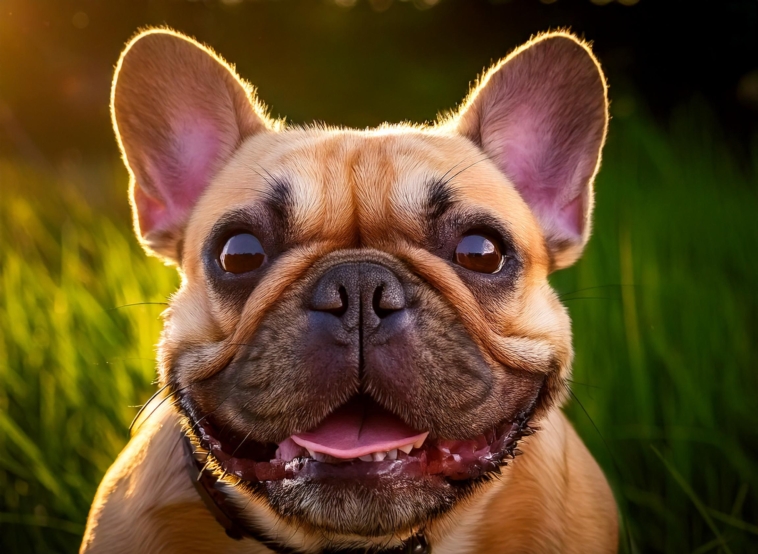Last updated on October 24th, 2024
Here’s an Overview:
Introduction to French Bulldog 101
Brief Overview for the Origin and Characteristics of the French Bulldog
History and Origin of French Bulldogs
Physical Characteristics and Appearance
What Are The Common Illnesses And Life Expectancy
Exercise and Activity Requirements
Training and Socialization of French Bulldog 101
French bulldogs 101 as Family Pets
Tips for Choosing a French Bulldog Puppy
Adoption vs. Buying: What’s Best?
Cost Of Owning A French bulldog 101
Basic Supplies for a French Bulldog 101
Understanding and Handling Behavioral Issues
Traveling with Your French Bulldog 101
Introduction to French Bulldog 101
French bulldogs are among the favorite breeds of dogs due to their beautiful looks and attractive temperament. These small creatures with bat ears and childish faces all-in-all are fun to have as a family pet or as a single who is apart from all of the fun. ‘
These dogs applied their skills to hunting rats but these days they are best-suited for owners who want more contact with their pet. They can be grown, energetic, fun loving, laid-back, require very little exercise; making them very suitable for urban living. But potential adopters should consider their specific health needs for their French bulldog, what will make a happy Frenchie happy.
Brief Overview for the Origin and Characteristics of the French Bulldog
The French Bulldog, or ‘Frenchies’ as they are affectionately called is a well built small dog of short coat. Their bat-shaped ears and bulging eyes afford some charm that makes this dog breed angelic and saucy. It is a fashionable and developing breed since the 1800s and has suited city areas because of its size and what can be termed as low exercise needs.
Key Characteristics
- Size and Weight: French bulldogs are normally within the range of 16-28 pounds in weigh.
- Lifespan: This breed lives for 10 to 12 years on average.
- Colors: E.g. Brindle, fawn and white.
- Temperament: Snappy, friendly: devoted, cute, and sometimes headstrong.
- Exercise Needs: Average; likes a daily 20-minute stroll and playing.
- Health Issues: Some common health challenges include breathing difficulties and hip dysplasia.
History and Origin of French Bulldogs
French Bulldogs originated in England in the 1800s. It was a breed derived from the English bulldog. There were lace workers from Nottingham who came to France with these small bulldog type dogs so this dogs are not from France. The breed became famous in France leading to the name ‘French bulldog. They acquired large bat ears and short squat muscular body. By the end of the 19th century, French bulldogs were all the rage in the upper classes of Paris. The American Kennel Club (AKC) recognized them for the first time and granted them a full registration on 1898. Their popularity as pet dogs is unparalleled all over the world.
Physical Characteristics and Appearance
The body structure of French bulldogs is strong and well built with a short height proportion. Generally, its weight falls within the range of 16 and 28 pounds and its length ranges from 11 and 12 inches. French bulldogs have a short smooth haired body with diverse makers wherein some are Flea, Fawn, White and Black. Main Features:
- Ears: Bat shaped ears.
- Eyes: Big, round and dark eyes.
- Nose: Flat, black in color, short nose.
- Body: Muscular and sturdy, deep in the chest.
- Tail: Naturally short and straight or screwed.
What Are The Common Illnesses And Life Expectancy
Bulldogs, particularly those affected by dry dog syndrome, often encounter various health issues. For example, well-bred Bulldogs typically experience fewer cases of elbow dysplasia. In contrast, some sun-yellow Bulldogs are more prone to this condition.
By recognizing these breed-specific vulnerabilities, owners can make informed decisions about breeding and care, ultimately promoting healthier puppies.
They highly suffer from the following:
- Brachycephalic syndrome: Because of such short snouts there can be trouble with breathing.
- Hip Dysplasia: The hip joint socket is not developed properly and this results in painful arthritis.
- Allergies: Skin allergy among French bulldogs is common and so there is diet control and medication.
- Ear Infection: Those bat ears of bulldogs are noticeable and quite prone to ear infection unless the ears are cleaned regularly.
- Obesity: Long durations of absence from work increases their readiness to develop obesity.
The average lifespan of this breed is about 10-14 years. Regular vet visits, good nutrition and exercise is paramount. This is essential to minimizing the degree of such conditions.
Diet and Nutrition Tips
Appropriate diet and nutrition of French Bulldogs influence their health and well being. Owners should ensure that the dogs are fed specific nutrients in appropriate proportions.
Tips:
- Quality Food: Purchase high-quality dog food that lists meat as the first ingredient in the food.
- Portion Control: Food portioning should be observed to avoid instances of obesity.
- Regular Feeding Schedule: Develop a fixed diet pattern for the dog.
- Avoid Human Food: Do not share table food or human food.
- Hydration: Make fresh drinking water available all the times.
- Healthy Treats: Provide healthy low calories treats.
- Watch for Allergies: Pay attention to the diets which are likely to cause allergy to the dog most commonly the French bulldogs.
Exercise and Activity Requirements
Even though French bulldogs are passive dogs, there remains the necessity for some physical activities every now and then.
- Daily Walks: As a daily exercise the dog can take walks of about 20 – 30 minutes a brisk and short walk will suffice.
- Playtime: Play activities where you can throw a ball or anything else for the dog to fetch or otherwise pull the dog about.
- Indoor Fun: The use of puzzle toys or physical training endeavors will serve as a useful activity for the dogs.
- Do Not Exhaust Your Dog: Due to the dogs’ brachycephalic characteristic, there is a danger of overheating; moderation in activity is advised.
- Rest: Make sure that there are enough recovery periods so that there is no fatigue late on.
- Water Access: Fresh water should be offered during the sporting activities whenever necessary.
Grooming and Maintenance
There is regular grooming that has to be done to ensure that the French Bulldog is healthy and happy. This involves weekly use of a soft brush to remove loose hair and spread skin oils. They can be bathed on a monthly basis with the use of dog’s shampoo.
Ears and Eyes
- Ears should be checked weekly for accumulation of muck, wax or inflammation. Cleansing should be done using a veterinarian approved cleaning solution.
- To keep your French Bulldog’s eyes healthy, regularly use a clean, damp cloth to wipe their eyeballs. This simple step helps prevent tear staining and reduces the risk of infection. Additionally, monitor for any signs of irritation, as they may require veterinary attention. By staying proactive, you can ensure your Frenchie remains comfortable and well-cared for.
Dental Care
- To prevent the build-up of tartar and halitosis, it is recommended to brush the dog’s teeth at least two times every week with a toothpaste made for dogs.
- Denta chews should also be given to help control dental hygiene.
Nail Trimming
- The nails should be clipped on a monthly basis. The nails of the dog should be clipped using a special clipper for dogs and care should be taken not to clip cut the quick.
Training and Socialization of French Bulldog 101
Training and socializing a French bulldog can treat the pet as a responsible being. It is best to start obedience training at a young age. Be kinder and offer rewards and encouragement instead of punishment and scolding. Socializing is no less a black-and-white matter than training. It is important to help socializing your French bulldog. Take them to different households or gatherings so that they do not grow up timid or aggressive later on. Allow them to listen to and see a variety of things on a continual basis.
Important Tips
- Consistency: Adhere to a schedule.
- Patience: Exercise moderation and care.
- Rewards: Give some if they need pushes for their goals.
- Exposure: Expose to a mix of crowds.
- Commands: Show him basic commissions. Can sit down, remain seated, and run back.
French bulldogs 101 as Family Pets
It goes without saying that French bulldogs 101 are the most affectionate of all breeds when it comes to family. They are small, and nice, and it is suitable for a small apartments.
- Temperament: Friendly, kind, and tolerant.
- Exercise Needs: Average; no more than one short walk is required.
- Grooming: Simple and easy; some brushing forth and back now and then.
- Training: They behave well with rewards method.
- Companionship: They enjoy people so much that they cannot be left alone for long periods of time.
French Bulldogs become a great companion for a family that wishes the affection of a pet without much energy requirements and versatile in where one resides.
Tips for Choosing a French Bulldog Puppy
There are several important factors to consider when going for that French Bulldog puppy you have always wanted:
- Health Checks: Start by ensuring that the puppy has been tested for common disease like hip dysplasia, and brachiocephalic v. syndrome. Also check their vaccination and deworming records if they have been attended.
- Breeder Reputation: Purchase a puppy from an ethical breeder who has all positive reviews.
- Temperament: Take note of the puppy’s character. Pick out one that is friendly, inquisitive, and plays nicely with other animals and people.
- Environment: Look at the conditions where the puppies are kept. Best if they are clean and spacious and adding the element of play is a plus.
- Parental History: Ask whether the dog’s parents had any behavioral problems or diagnostic health problems.
Adoption vs. Buying: What’s Best?
When trying to choose whether to adopt a French bulldog or buy one, every option has its pros and cons.
Adoption
- It is usually much cheaper than buying a French Bulldog.
- Help give homes for animals that are in shelters.
- Will ensure that the dogs get all required vaccinations and get spayed/neutered.
- Possible negative attributes like behavioral problems or unknown genetics.
Buying
- Procures purebred French Bulldogs which have a full family tree.
- Gives the users an opportunity to select particular traits or features.
- May be much more costly.
- Calls for endorsement of credible breeders to prevent a puppy mill.
- Weigh the pros and cons of both methods in order to come up with one that best fits individual likes and situation.
Cost Of Owning A French bulldog 101
When considering getting a French Bulldog, several factors contribute to their higher cost. Firstly, the breed’s popularity can drive up prices due to demand. Additionally, responsible breeding practices, which ensure the health and quality of the puppies, often require significant investment. Furthermore, potential health issues associated with the breed can lead to increased veterinary expenses over time. By taking these factors into account, you can better understand the overall commitment involved in welcoming a French Bulldog into your home.
- Initial Purchase Price: It usually ranges between $1,500 to $3,000 to get a French bulldog.
- Vaccinations And Vet Visits: Vaccines and surgeons normal check ups can rise to about $500 every Year.
- Food And Supplies: Good dog food and toys, leashes, bed, and other supplies can about $300-$500 annually.
- Grooming: Some pets must be groomed professionally hence slight extra $40 a visit.
- Insurance: The average premiums for pet health insurance is approximately $20 to $50 monthly.
- Health Issues: Certain health issues common to French bulldogs make the pet an expensive affair.
Basic Supplies for a French Bulldog 101
In preparation of welcoming a French bulldog, acquiring the essentials assists in making the process efficient.
- Collar and Leash: Strong and properly sized collar and leash for walks.
- Harness: A collar might restrict too much so a harness will do to avoid pushing on the neck.
- Feeding and Water Bowls: Bowls that are light in weight, rigid, and easy to clean.
- Noway Dog Food Evolution: Well balanced dog food depending on pairing.
- Crate: Let’s the dog in and affiliated cage.
- Bedding: Comfortable but strong bedding for deep sleep.
- Grooming Supplies; Grooming items such as brushes, clippers and shampoos.
- Toys: Soft-chewing and wild & cute-activity toys.
- Healthcare Products: Tick-off medicine, heart medicine for dogs, ear wash and drops.

Understanding and Handling Behavioral Issues
Behavior of the French bulldogs may take a different turn depending on the dog. Important aspects of these activities are:
- Early Socialization: Expose your French Bulldog to various locations and persons as well as other dogs as early as possible.
- Consistent Training: Ensure such training is done every day consistently.
- Positive Reinforcement: Give rewards for exhibiting good behaviors either using food or amata.
- Exercise: Provide in and outdoor activities regularly.
- Professional Help: Seek the assistance of trained animal behaviorists in case these problems are persistent in nature.
Common behavioral problems often manageable through these methods. Other methods such as shape training and patience are necessary. It is actually as important to take care of a French Bulldog’s mind as much as its body.
Traveling with Your French Bulldog 101
Traveling with a French Bulldog 101 calls for advance consideration on the following:
Get Health Check Prior to Travel
- Make sure all vaccinations are done and in proper time.
- Get a health certificate from the vet.
Necessary Equipment for Traveling with Pets
- Fitting, adequate airflow carrier.
- Leash, collar, and ID tags.
- Collapsible water bowl and water.
- Pet emergency kit for travel.
Traveling with a Dog by Car: Issues Related to Carising
- Place the carrier inside the car with the seatbelt on.
- Hydration and bathroom use interval must be followed.
- Even if the air temperature is moderate, it is crucial not to leave your dog in the vehicle. In fact, temperatures inside a car can rise quickly, leading to heat stress or heatstroke. Therefore, always prioritize your pet’s safety and well-being by bringing them with you or ensuring they are in a cool, safe environment.
Traveling by Air with a Dog: Situations and Suggestions
- Look for airlines that accept pets on board.
- Know and check dimensions and breeds that are appropriate.
Article by: Dr. Sajawal Amin (Deep researcher)




